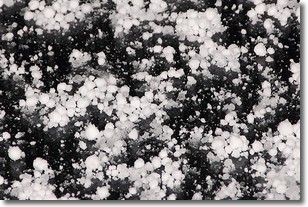Weather Alert in North Carolina
Flood Watch issued May 11 at 10:39PM EDT until May 13 at 8:00AM EDT by NWS Greenville-Spartanburg SC
AREAS AFFECTED: Avery; Alexander; Yancey; Mitchell; Southern Jackson; Transylvania; Henderson; Caldwell Mountains; Greater Caldwell; Burke Mountains; Greater Burke; McDowell Mountains; Eastern McDowell; Rutherford Mountains; Greater Rutherford; Polk Mountains; Eastern Polk; Pickens Mountains; Greenville Mountains
DESCRIPTION: * WHAT...Flash flooding caused by excessive rainfall continues to be possible. * WHERE...Portions of North Carolina, including the following areas, Alexander, Avery, Burke Mountains, Caldwell Mountains, Eastern McDowell, Eastern Polk, Greater Burke, Greater Caldwell, Greater Rutherford, Henderson, McDowell Mountains, Mitchell, Polk Mountains, Rutherford Mountains, Southern Jackson, Transylvania and Yancey and Upstate South Carolina, including the following areas, Greenville Mountains and Pickens Mountains. * WHEN...From 10 AM EDT Monday through Tuesday morning. * IMPACTS...Excessive runoff may result in flooding of rivers, creeks, streams, and other low-lying and flood-prone locations. * ADDITIONAL DETAILS... - A slow-moving storm system is expected to bring multiple rounds of showers and storms on Monday and Monday night. Runoff from the moderate to heavy rainfall will likely cause flooding. The heaviest rainfall and greatest risk for flash flooding is expected along the Blue Ridge Escarpment and the southern and eastern-facing slopes of the mountains in western North Carolina. Rainfall totals of 3-5 inches with isolated amounts between 5 and 7 inches are possible in these areas. This will not be anywhere near the magnitude of flooding that occurred during Helene. - http://www.weather.gov/safety/flood
INSTRUCTION: A Flood Watch for flash flooding means there is a potential for rapid onset flooding based on current forecasts. Flash flooding is a very dangerous situation and may impact areas that do not typically flood. Please monitor the latest forecasts and be prepared to take action quickly should Flash Flood Warnings be issued. Rainfall of more than five inches in similar storms has been associated with an increased risk of landslides and rockslides. If you live on a mountainside or in a cove at the base of a mountain, especially near a stream, be ready to leave in advance of the storm or as quickly as possible should rising water, moving earth, or rocks threaten. Consider postponing travel along mountain roads during periods of heavy rainfall.
Want more detail? Get the Complete 7 Day and Night Detailed Forecast!
Current U.S. National Radar--Current
The Current National Weather Radar is shown below with a UTC Time (subtract 5 hours from UTC to get Eastern Time).

National Weather Forecast--Current
The Current National Weather Forecast and National Weather Map are shown below.

National Weather Forecast for Tomorrow
Tomorrow National Weather Forecast and Tomorrow National Weather Map are show below.

North America Water Vapor (Moisture)
This map shows recent moisture content over North America. Bright and colored areas show high moisture (ie, clouds); brown indicates very little moisture present; black indicates no moisture.

Weather Topic: What are Fractus Clouds?
Home - Education - Cloud Types - Fractus Clouds
 Next Topic: Freezing Rain
Next Topic: Freezing Rain
A fractus cloud (scud) is a fragmented, tattered cloud which has
likely been sheared off of another cloud. They are accessory clouds, meaning they
develop from parent clouds, and are named in a way which describes the original
cloud which contained them.
Fractus clouds which have originated from cumulus clouds are referred to as
cumulus fractus, while fractus clouds which have originated from stratus clouds
are referred to as stratus fractus. Under certain conditions a fractus cloud might
merge with another cloud, or develop into a cumulus cloud, but usually a
fractus cloud seen by itself will dissipate rapidly.
They are often observed on the leading and trailing edges of storm clouds,
and are a display of wind activity.
Next Topic: Freezing Rain
Weather Topic: What is Graupel?
Home - Education - Precipitation - Graupel
 Next Topic: Hail
Next Topic: Hail
Graupel is a form of precipitation that is created by atmospheric conditions
which cause supercooled water droplets to contact snow crystals and freeze to
their surface.
Sometimes known as soft hail or snow pellets, graupel is delicate and easily
destroyed by touch. Whereas hail usually falls during severe weather, graupel
doesn't require such conditions to form, and can form in mild precipitation
similar to situations which produce snowfall.
Next Topic: Hail
Current conditions powered by WeatherAPI.com




